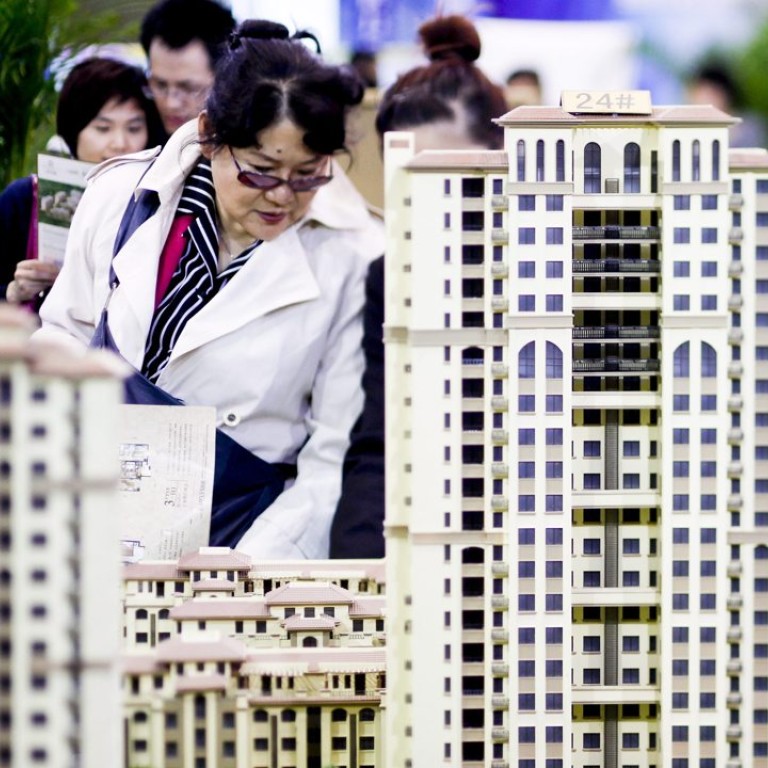
How to make money off China’s new property bubble
China’s large cities are seeing early signs of a new housing bubble, due to the central bank’s continued expansionary monetary policy and local governments’ aggressive moves to clear stockpiles of unsold units, with shares of developers with high exposure to tier-1 and big tier-2 cities likely to outperform the market in the short term.
But analysts also warn that investors need to be aware of policy tightening risks if markets in some cities show signs of overheating.
Housing prices in China’s big cities have soared since the beginning of this year. Average new home prices in 100 major cities rose for a seventh straight month in February, up 5.3 per cent from the same period a year earlier, according to latest statistics from China Index Academy, an independent property research company.
Home prices in the 10 largest cities, including Shanghai, Beijing and Shenzhen, jumped 10 per cent year on year. Among them, Shenzhen saw prices surge 53 per cent while Shanghai and Beijing recorded jumps of 15 and 10 per cent respectively.
READ MORE: China property bubble bound to burst, say experts
The recovery is mainly driven by repeated expansionary measures by the central bank and loosening of housing curbs at various levels of the government, said Tu Lilei, an analyst at Haitong Securities.
The People’s Bank of China lowered the reserve requirement ratio (RRR) by 50 basis points from March 1, accelerating its monetary easing after six interest rate cuts and six RRR reductions since November 2014. New yuan loans hit a record 2.54 trillion yuan in January, with the growth in M2, a gauge of money supply, reaching 14 per cent – far above last year’s annual M2 growth target of 12 per cent.
Earlier last month, the PBOC also cut the minimum mortgage down payment for first-home buyers from 25 per cent to 20 per cent, the lowest required level ever, in a bid to bolster demand.
Accompanying the continued credit expansions by the central bank, local governments also have rolled out a slew of aggressive measures to clear stockpiles of unsold property, including offering tax incentives and subsidies, loosening mortgage rules, and easing home purchase restrictions for Hong Kong and Macau citizens.
The government of northeastern Shenyang city even announced zero down payment loans for fresh college graduates, but rolled it back after only a day following public criticism on the internet.
“A bubble in the property market is building up,” analysts from JP Morgan said in recent research report.
The investment bank said the current market rebound is mainly driven by investment demand, which accounted for half of the buyers.
In the affluent Yangtze River Delta economic zone, big tier-2 cities, such as Suzhou and Nanjing, are seeing a “very aggressive” average selling price (ASP) growth, which is currently 20 to 30 per cent higher than their last launch in the third quarter of last year, said JP Morgan analysts.
READ MORE: Guangzhou may open up for Hong Kong buyers but insufficient to help to boost sales
Transaction volumes have also improved more rapidly after the Lunar New Year holiday compared with previous years.
“Such positive market sentiment has created even stronger investment demand,” they said.
Looking ahead, JP Morgan believes the bubble is unlikely to burst “any time soon” as both down payments for first-home buyers and household debt relative to economic growth remain at low levels.
They favour developers with high exposure to tier-1 and big tier-2 cities, while suggesting caution on real estate companies with more exposure to smaller cities.
“We continue to believe low tier-2 cities will underperform tier-1 and top tier-2 due to the inventory situation, and hence alpha (excess returns on an investment relative to the return of a benchmark index) will continue to emerge,” JP Morgan said.
The investment bank rates Shenzhen-listed China Vanke and Shanghai-listed Poly Real Estate as “overweight” and Shanghai-traded Gemdale Group “underweight”.
However, analysts from Changjiang Securities warn the recent sharp increase in transaction volumes may not be sustainable in the longer term as China’s overall property sector is still in “cyclical downturn” and government policy to support the market is subject to “the law of diminishing marginal utility”.
READ MORE: Beijing’s monetary policies increase risk of property bubbles, says PBOC adviser
“There is increasing polarisation between big and small cities in China, as the housing market in tier-1 cities, like Shenzhen and Shanghai, is sizzling and faces tightening risks, while the market in lower-tier cities or the western region still struggle with sluggish demand, with the policy to clear stockpile showing little effect,” said Pu Dongjun, an analyst for Changjiang Securities.
“We believe the transaction volume of property in 2016 probably won’t exceed 2015,” Pu said, adding that demand will shrink if property prices continue to soar.
He said investors could watch for short-term opportunities in developers with relatively low valuations, such as Poly Real Estate, or developers with exposure in big tier-2 cities, like Hangzhou Binjiang Real Estate Company. However, possible risks include tightening of monetary or industry policy if markets in some cities show signs of overheating, Pu said.

